A savory plant-based cornbread baked right in your trusty cast iron skillet is the perfect side dish. Subtle herby chives and sweet tangy notes from sundried tomatoes make a delicious pairing with the hearty, but fluffy texture we've come to expect with a well-made cornbread - enjoy!
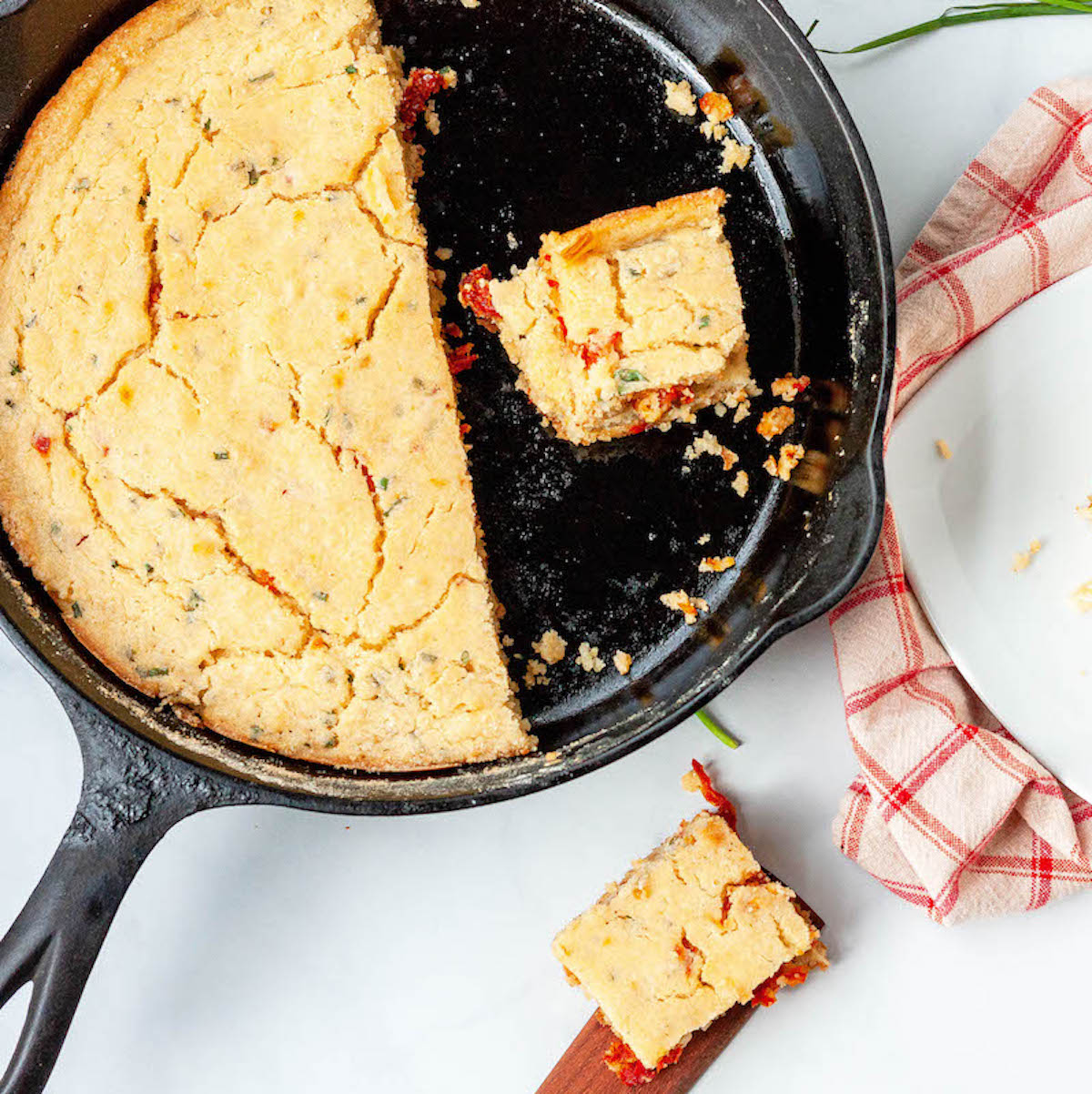
Jump to:
Few foods trigger a maudlin, comfort-food-feeling more than bread for me. Especially when it comes to cornbread. This notoriously finicky (but completely worth it) bread is a staple in Southern kitchens, but beloved regardless of geographic region. I love that this recipe is easy, calls for only 10 ingredients, and only needs 30 minutes in the oven to create a batch of plant-based cornbread that will make Grandma jealous.
In fact, I suggest pairing this cornbread with our fan-favorite Sautéed Radish and Green Pea Pasta recipe for an extra drool-worthy meal.
❤️ What you’ll love about plant-based cornbread
What is there to not love? Especially for those who are seeking a vegan cornbread that doesn’t sacrifice flavor.
Ease and accessibility. Even if you aren’t vegan, or don’t follow a plant-based diet, this cornbread recipe is more accessible to those who are conscious of ingredients and how they are sourced. This recipe is dairy-free, eggless, plant-forward, and ideal for vegans and vegetarians alike. Plus, this recipe is very easy - the only “unusual” step is whipping aquafaba. As long as you note the order of the steps (for example, add the lemon juice to the plant-based milk early, so it has time to curdle), you’ll be all set.
Skillet cornbread creates a rustic quality ideal for entertaining. There is just something special about cornbread baked directly in a cast iron skillet. Not only does the cast iron material help create a delightful consistency, but it makes for a beautiful, rustic presentation that is sure to inspire.
Get creative with customizations. I enjoyed sundried tomatoes and fresh chives in this batch (talk about vibrant color!), but you can harness an array of flavors that speak to you. Go a little spicier with chiles and jalapeno peppers, or more savory with caramelized onions. Do you prefer something more plain? You are welcome to omit added ingredients altogether.
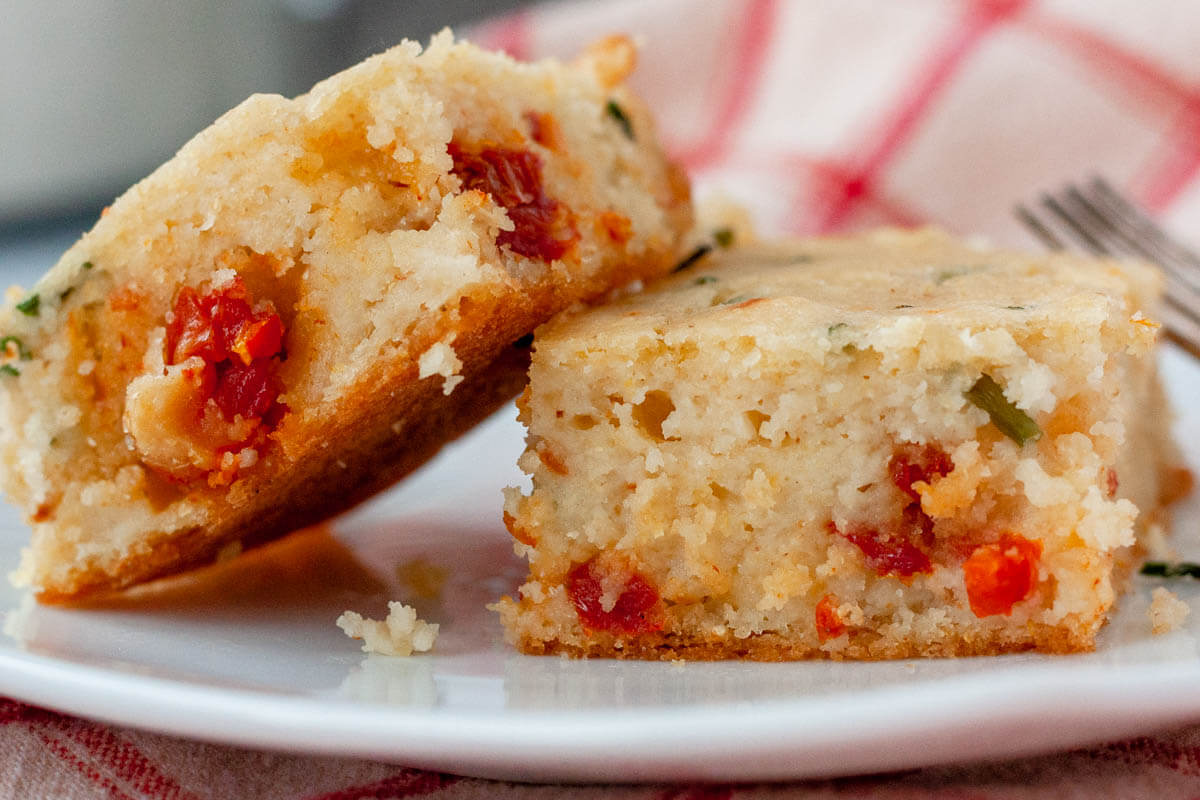
🥣 Ingredient List
Wet Ingredients
Plant-based milk: A neutral-flavored milk is best. We use soy or almond most frequently, and suggest an unsweetened version.
Juice of one large lemon: This will be added directly to the milk, creating an easy and delicious plant-based buttermilk.
Extra virgin olive oil (optional): The fat from the olive oil helps coat the dry ingredients and promotes a better texture; AKA, less cornbread crumble.
Vegan Butter: Ideal for a traditional cornbread flavor, and for a delicious crust while baking in the cast iron skillet.
Organic cane sugar: Many versions of granulated sugar are processed so extensively, the granules are far from their plant origins. Since companies tend to use bone char, opt for a vegan version that is most closely related to granulated sugar.
Dry Ingredients
Yellow cornmeal: I love the color and flavor of yellow cornmeal, and this recipe calls for a finely-ground meal. If you have access to an organic version, go for it!
All-purpose flour: Use the brand of your choosing
Baking powder: As always, baking powder is the source of leavening.
Baking soda: When mixed with the acidic plant-based buttermilk, the baking soda will help the baking powder leaven, and create a more tender cornbread.
Salt: For added flavor and umami. A finer grain salt will promote even distribution throughout the dough.
Additions (Optional)
Sundried tomatoes: I prefer the tomatoes packed in oil, but I do drain them before incorporating in the dish.
Chives: Fresh chives add a very light onion flavor to the cornbread. If dried chives are the only option in your pantry, just use half the amount the recipe calls for - unless you just really love chives!
👩🏽🍳 Step-by-Step Instructions
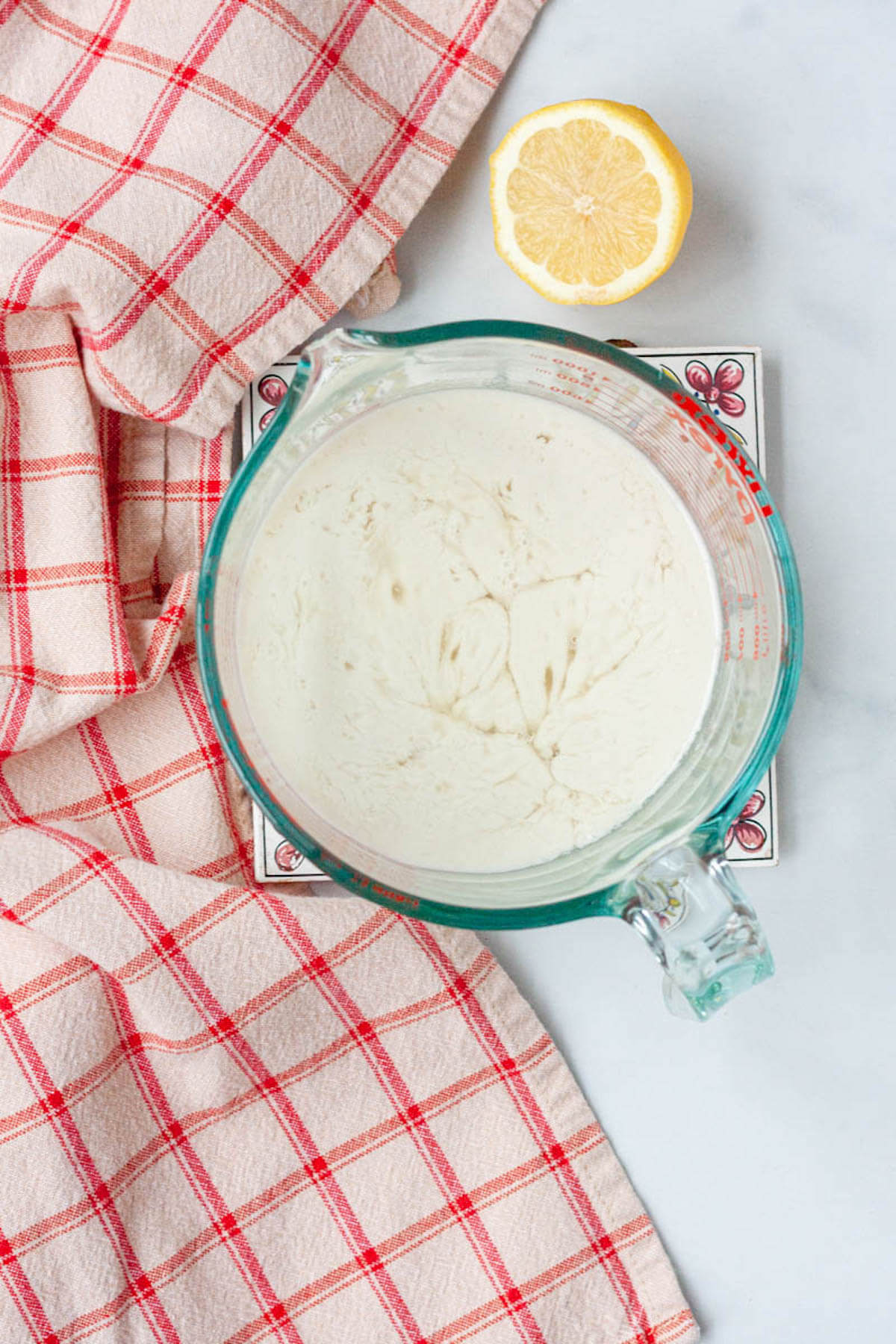
Start by “making” the plant-based buttermilk by mixing the lemon juice and plant-based milk. Allow to sit and curdle while you prepare the rest of the ingredients.
Preheat the oven to 400ºF and place the cast iron skillet in the oven to warm.
Combine the wet ingredients first, and then add to your cornmeal. Stir until the consistency is smooth and allow the bowl to sit for several minutes. This will allow the cornmeal to fully absorb the wet ingredients.
Melt the vegan butter and reserve half for later.
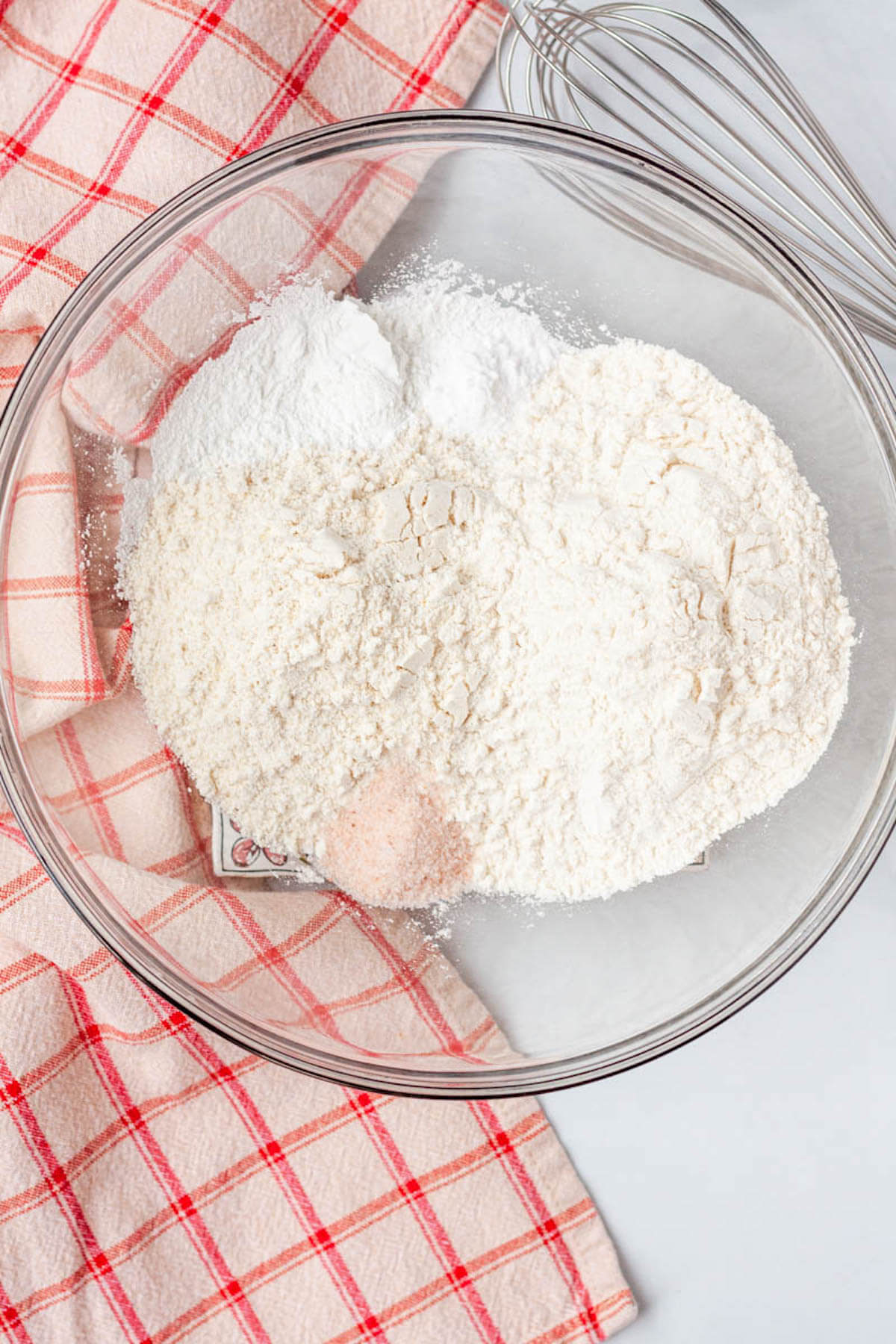
Whisk dry ingredients in a separate bowl, until evenly combined. Then, gently stir the dry mixture into the wet cornmeal mixture, until no flour clumps remain. Pour in the vegan butter (remember to reserve some for later) and stir until just combined.
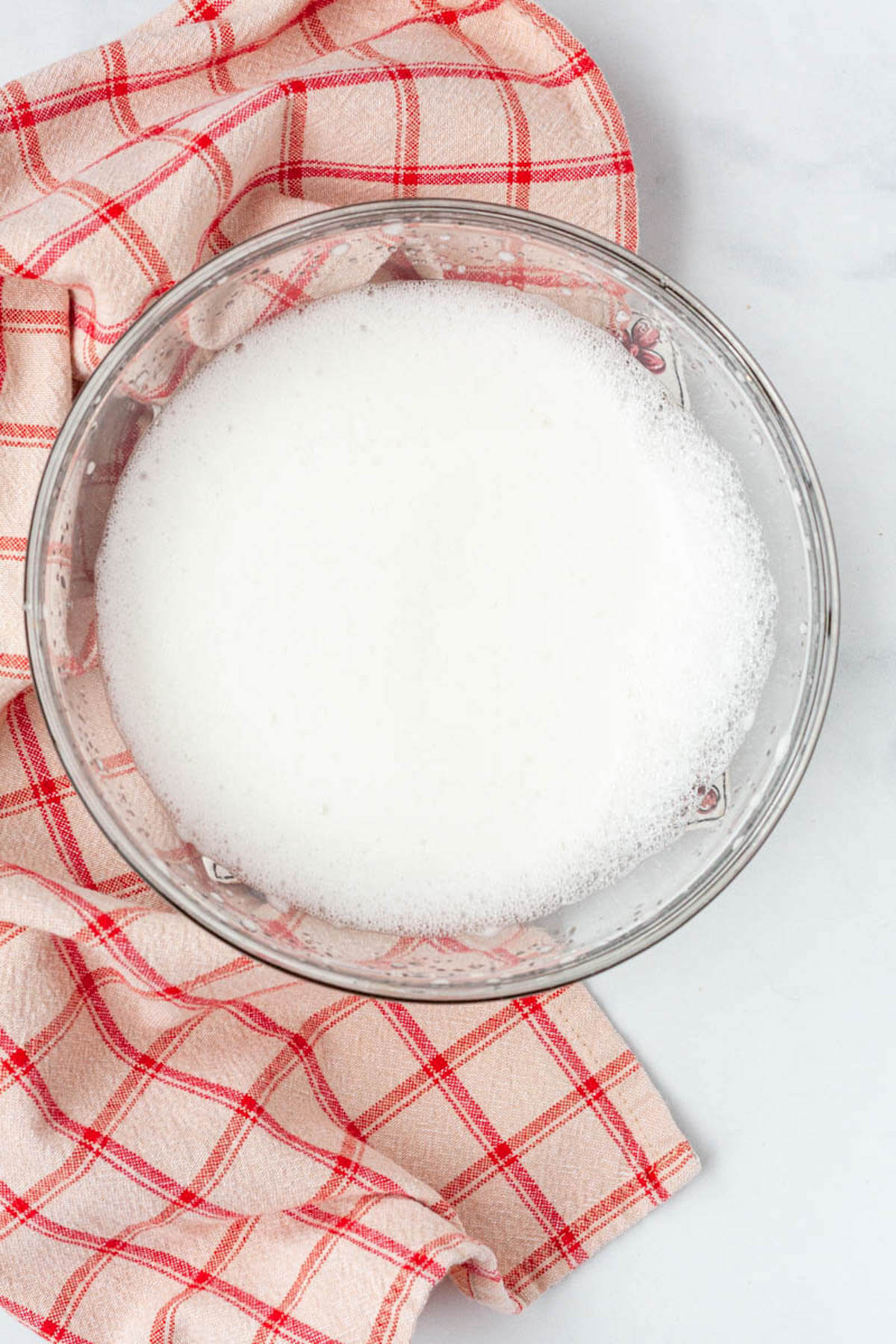
Whip the aquafaba (chickpea or garbanzo bean juice) and fold it into the batter, being careful not to overmix the dough.
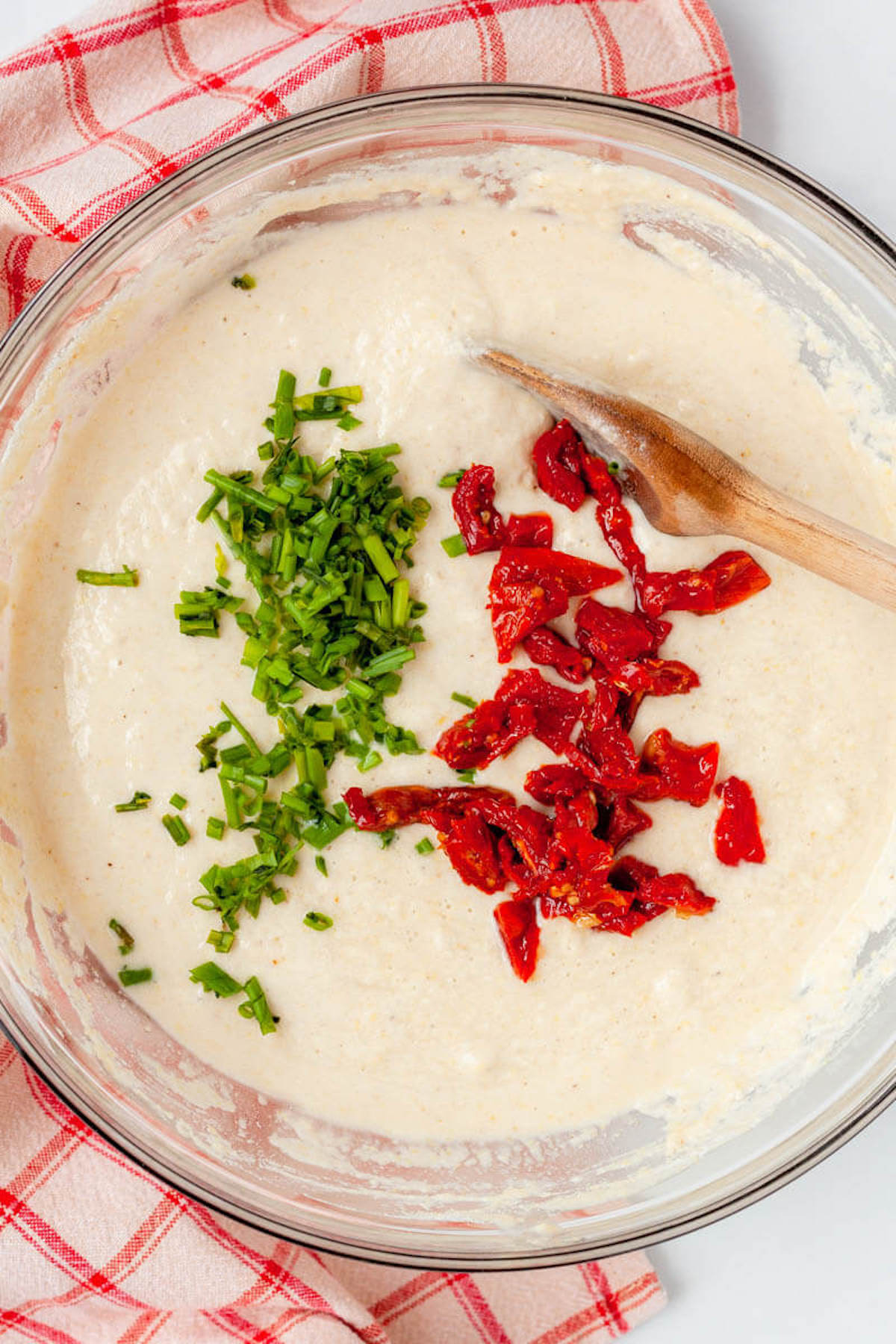
Stir in any fun additions, like the sundried tomatoes and chives in this recipe.
Carefully remove cast iron skillet from oven and use the remaining vegan butter to cover the bottom of the skillet. Watch for the sizzle!
Add cornbread dough and you are ready to bake!
Recipe
Recipe

Plant-Based Cornbread
Equipment
- 10 - 12 inch cast iron skillet
Ingredients
- 2 cups unsweetened plant-based milk I use unsweetened soy or almond milk
- 1½ cups all-purpose flour reserve more to adjust consistency, organic
- 1¼ cups organic yellow cornmeal I use finely-ground
- ¾ cup vegan butter
- ⅓ cup sundried tomatoes in oil drained and roughly chopped
- 2 tablespoons chopped fresh chives more, if desired
- 9 tablespoons aquafaba reserved chickpea juice
- juice 1 large lemon
- 1 tablespoon organic cane sugar
- 1 tablespoon extra virgin olive oil optional
- 3 teaspoons baking powder
- 1¼ teaspoon baking soda
- 1¼ teaspoon kosher salt finely-ground will offer more consistent distribution
Instructions
Vegan Buttermilk
- Mix lemon juice and plant-based milk of your choice (I prefer unsweetened vanilla varieties) and set aside while you prepare the rest of your ingredients. The milk should appear to "curdle."
Vegan Cornbread
- Preheat oven to 400°F. Place a seasoned cast-iron skillet in the oven to warm while you prepare the remaining ingredients.
- In a medium bowl, mix cornmeal, plant-based buttermilk, sugar, and extra virgin olive oil, if using. Gently stir to combine, until no large cornmeal pockets remain.
- Melt the vegan butter, reserving about a tablespoon of butter for later.
- In a separate bowl, whisk dry ingredients (all-purpose flour, baking soda, baking powder, and salt) together.
- Slowly incorporate the dry mixture into the wet cornmeal mixture, until no large clumps of flour are visible. Pour in the melted vegan butter and stir until just combined.
- Whip the aquafaba using a stand or hand mixer until stiff peaks form, after a few minutes of whipping.
- Fold in the whipped aquafaba, or "aquafaba eggs" into the batter, treating the dough gently, so as not to overmix.
- Add the chives and sundried tomatoes, stirring to evenly distribute.
- Remove the cast iron skillet from oven and add the reserved tablespoon of butter to melt (it will sizzle!) and allow the butter to evenly cover the bottom of the skillet.
- Pour batter into the skillet and bake for about 30 minutes, or until the cornbread is a light, golden brown and a toothpick inserted in the center comes out clean.
- Allow to cool in the skillet for about 20 minutes before serving to enjoy warm! Store in the refrigerator for up to 3 days, or freeze for up to 3 months. Enjoy!
Notes
- Substitute regular buttermilk in place of plant-based buttermilk
- Use 3 whole eggs in place of aquafaba eggs
- Regular unsalted butter in place of vegan butter
- Sugar substitute of your choosing - just note that you should aim for a product that has similar properties to granulated sugar (attracts moisture and binds)
- Extra virgin olive oil will make the crumb a little more dense, but helps the cornbrad maintain its structure. This is an optional step.
- Add herbs and seasonings of your choosing, or omit herbs and sundried tomatoes altogether.
Nutrition
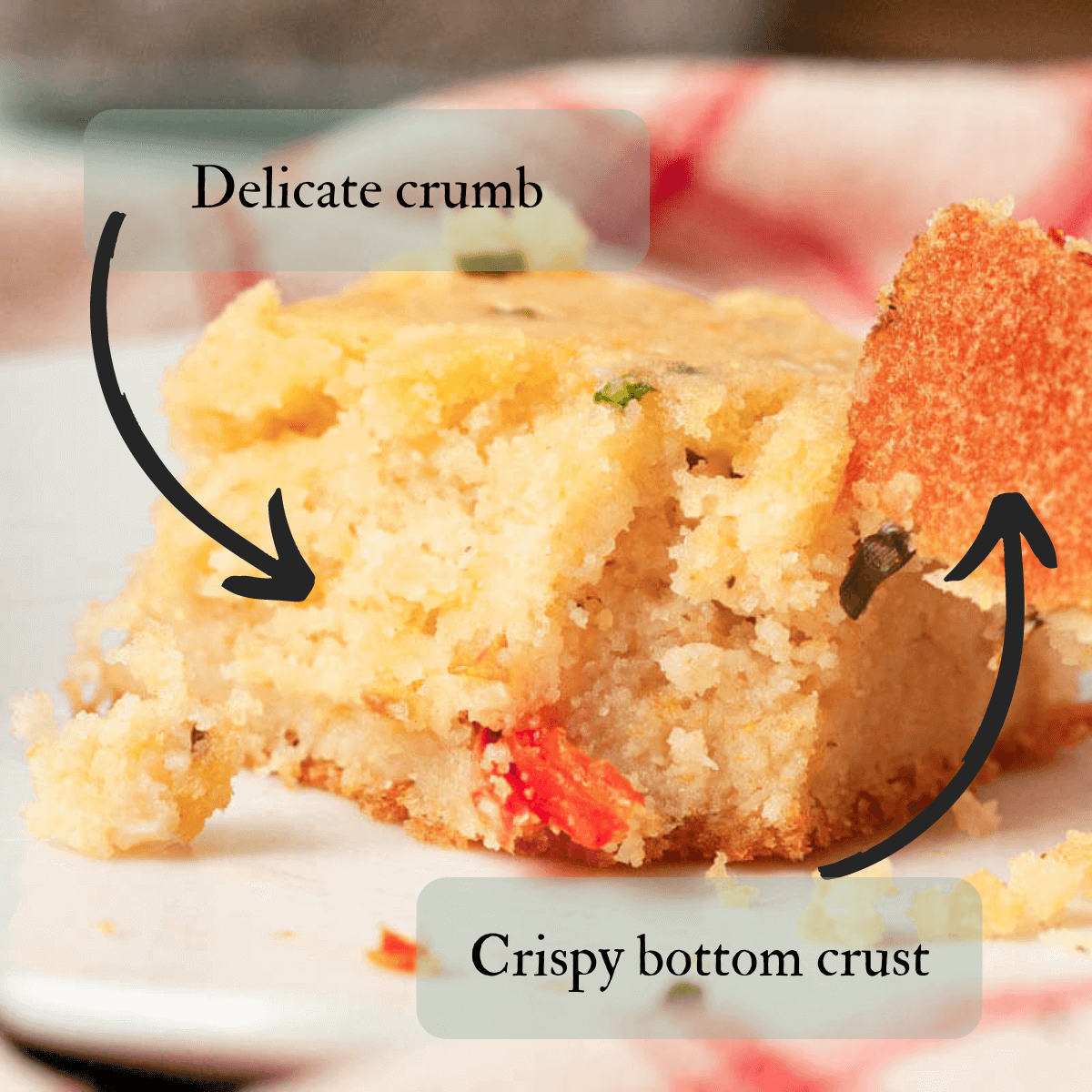
✨ 3 Tips for Non-crumbly Cornbread
Whether or not you are making plant-based cornbread, or a traditional variety, one of the worst “cornbread culprits” is the crumble. We all dread that ruined moment, where the crumbs are just small enough to escape your grasp and not even a touch of melted non-dairy butter will resolve the problem. We’ve all been there! In case this is an issue for you, here are a few tips to help make the best non-crumbly cornbread batch yet:
- Cornmeal absorbs moisture slowly, so prepare the wet ingredients first, add to the cornmeal, and allow the mixture to rest while you prepare the rest of the dry ingredients (or have a sip of wine...whatever floats your boat!).
- A hint of olive oil does help the finished cornbread stay together better. I recommend adding just a bit to give it an extra boost of moisture and offer a little more structure.
- Adjust the cornmeal-to-flour ratio, increasing the flour and decreasing the cornmeal.
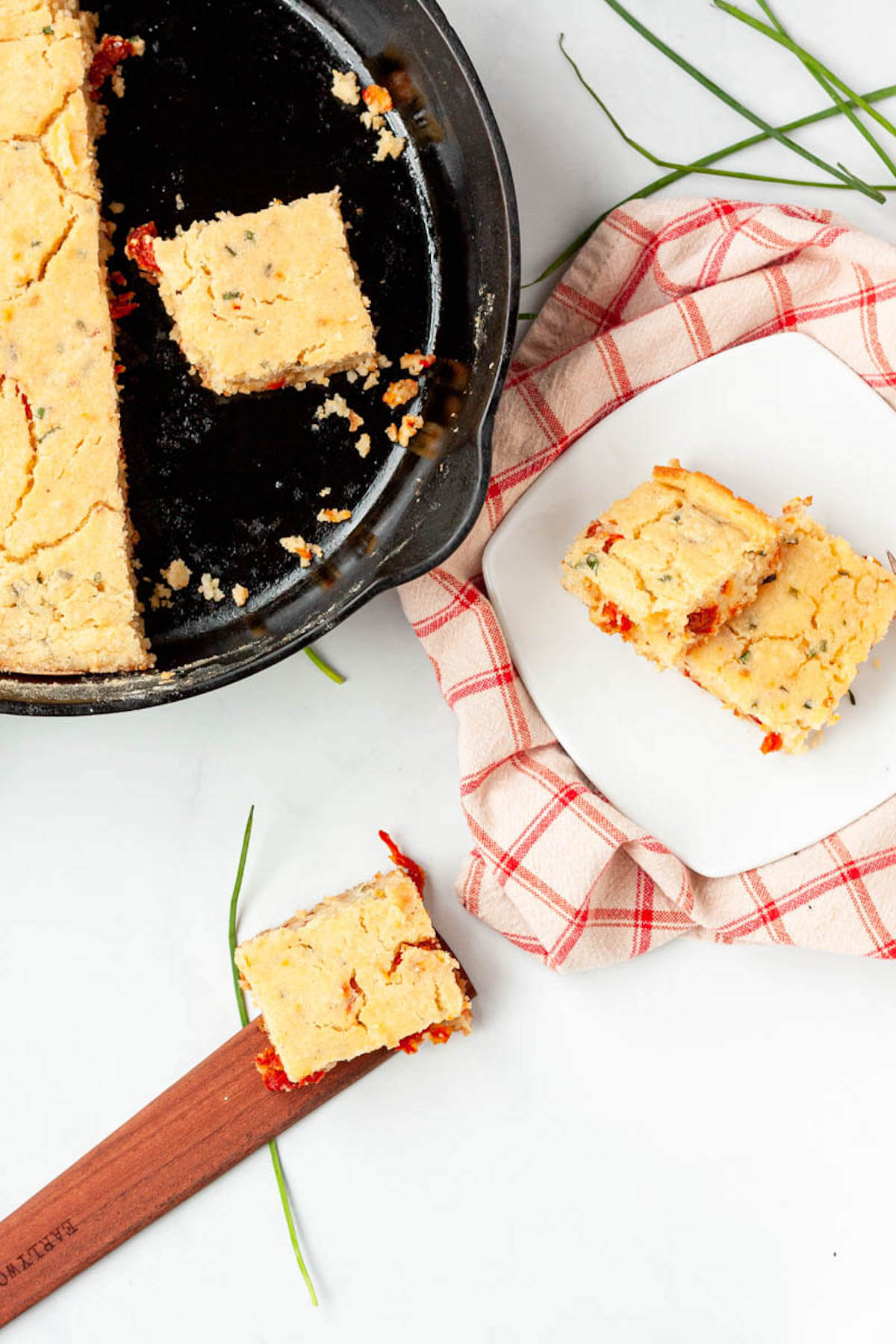
❓Frequently Asked Questions
How long can I store plant-based cornbread?
Store in the refrigerator (in an airtight container) for up to 4 days. Wrap and place in an airtight freezer bag or container for up to 3 months. If you added extra sundried tomatoes to the cornbread, don’t forget that aluminum foil can react poorly with tomato-based products. The amount in this recipe is negligible, but still worth noting.
What is the difference between Northern cornbread and Southern cornbread?
Besides the use of a cast iron skillet, there is MUCH debate surrounding the characteristics that make cornbread “Southern.” Some insist that sweet cornbread - or any amount of sugar - makes the cornbread Northern, but many Southern kitchens are filled with cornbread not only baked with a sweetening agent, but drizzled with butter and honey. Others believe the difference lies in the cornmeal used and presence or lack of regular flour. Ultimately, cornbread comes down to what tastes good to you. Turn it into a batch of love by using ingredients that please your palate.
Is cornbread better in cast iron?
Texture is critical to baking a successful batch of cornbread, which is why I consider a cast iron skillet the secret to success. Why does the cast iron material edge out aluminum and other materials in this instance? Two words: heft and heat. Cast iron does absorb heat well (hence why I suggest preheating it along with the oven) and hold the heat longer than other materials, especially if the cast iron pan is of a good quality and appropriately thick. You can tell the difference between cheap and higher quality cast iron utensils just by holding them. The heft and heat of the cast iron skillet will create even baking of this plant-based cornbread, which includes a crisp crust and tender crumb. Delish!
What can I use if I don't have a cast iron skillet?
If you don’t have a trusty cast iron skillet in your kitchen, don’t fret. Cornbread can be baked in a variety of vessels, including glass, ceramic, and aluminum pans. You don’t need to preheat the other materials since they conduct heat better (therefore, get warmer faster) than cast iron. Just stay close to the oven the first time you bake the recipe, in case the materials in your dish cause it to bake quicker. We don’t want any extra-crispy edges...unless that’s your thing.
Can I use butter instead of oil for cornbread?
Yes, you can use butter in place of oil in a cornbread recipe. Add about ¼ more melted butter (in volume) to the recipe. I like the combination of vegan butter and olive oil because you have the best of both worlds: classic butter flavor that makes cornbread unique, but also a more satisfying crumb that is slightly more moist and just dense enough to stick together without sacrificing the “fluff factor.”
Is baking soda plant-based?
Baking soda and baking powder (baking soda + acid) are chemical leaveners that do occur naturally. These are almost more elemental than plants themselves, since they are chemical leavenings.
What can I use instead of milk in cornbread?
Non-dairy milk alternatives are perfectly acceptable for use in a cornbread recipe. This plant based cornbread used unsweetened almond milk, but you are welcome to incorporate your non-dairy preference. Depending upon the type of cornbread you are making - savory, sweet, filled with herbs or veggies - you will need to consider the flavor profile of the non-dairy milk. Select a neutral-flavored option if you intend to showcase savory flavors, so as not to overpower any of the other flavors.
😍 You might also enjoy...
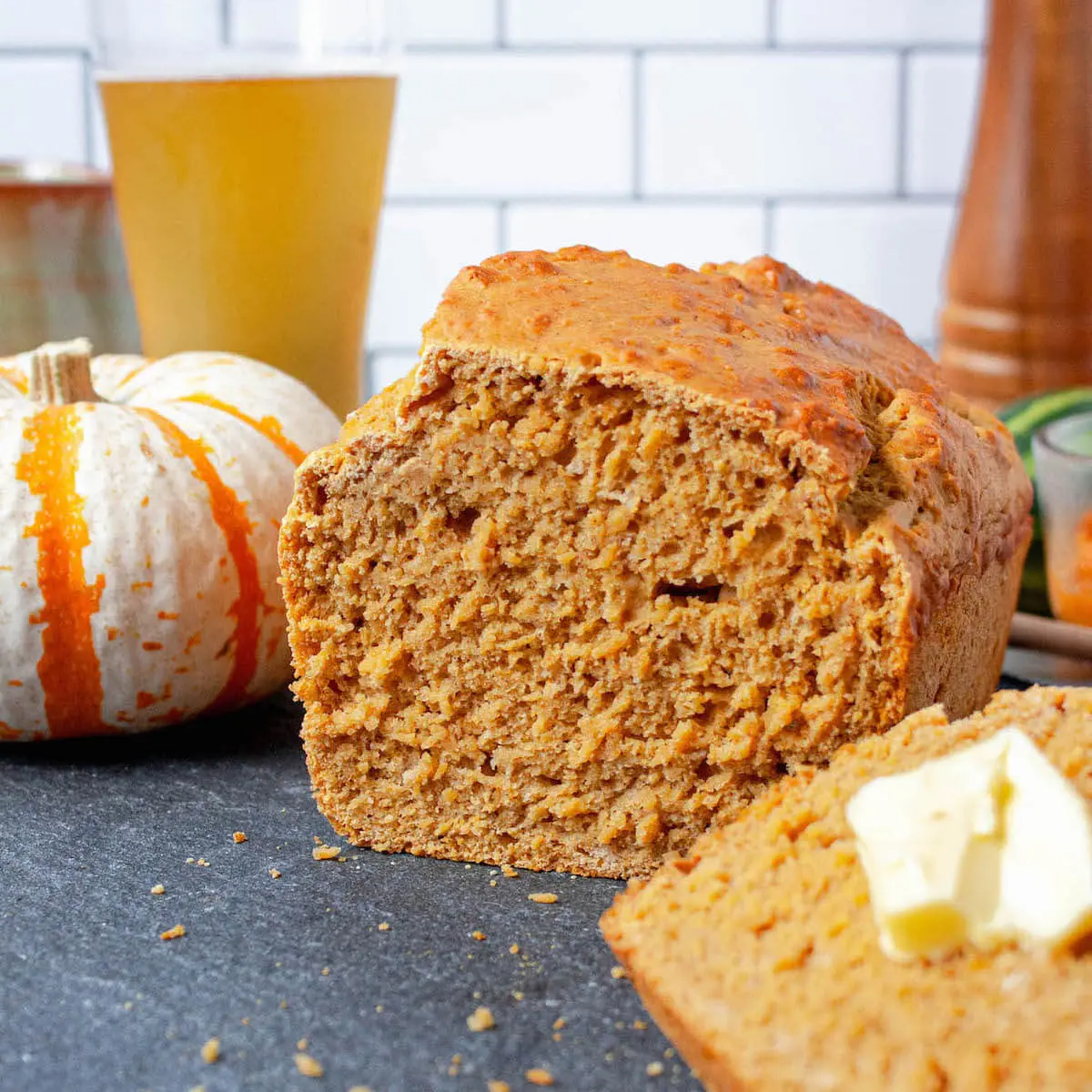
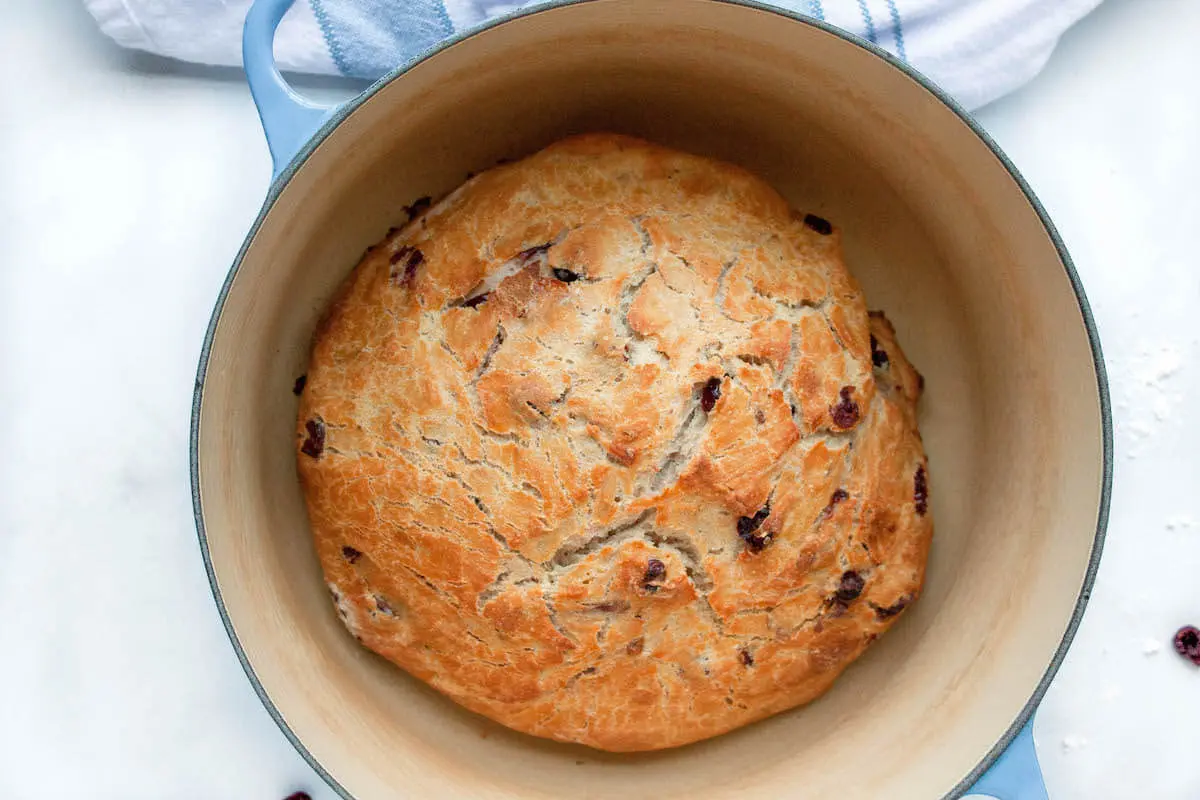
Don't forget there is always room for more at the Inspired Epicurean table. I'd love to hear from you - and don't forget to snap a pic and share your creations with our community! Cheers, friends!

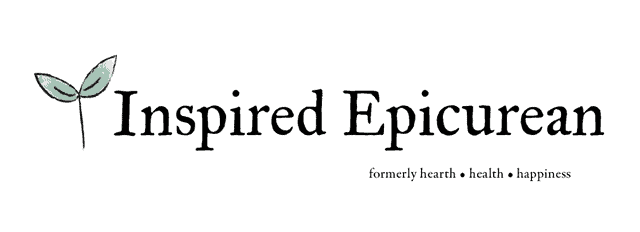

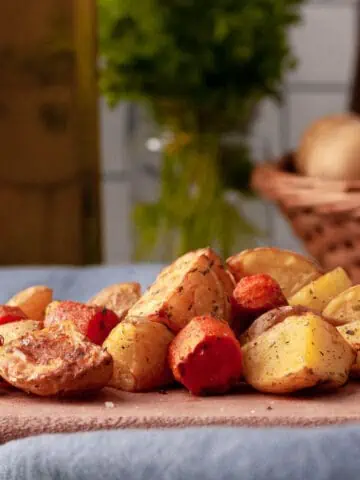
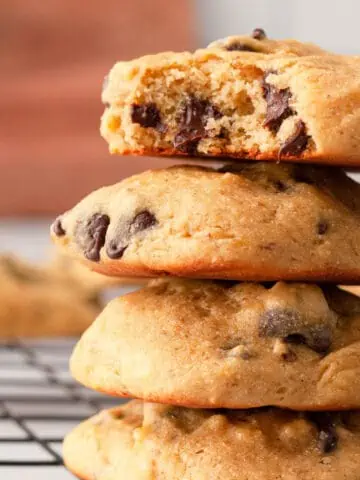
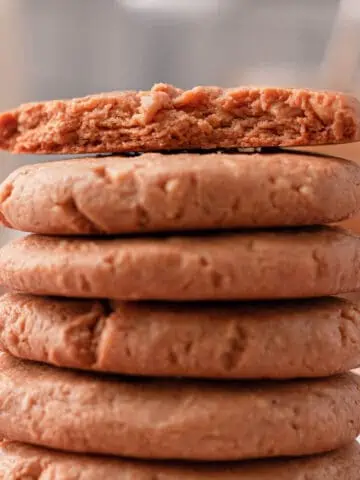
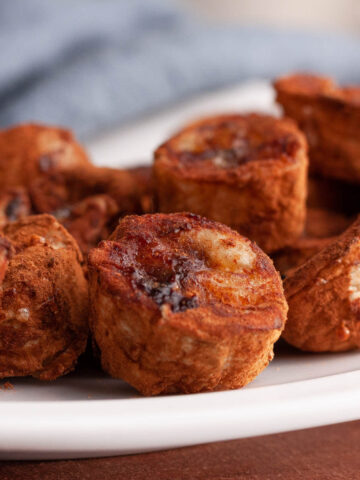
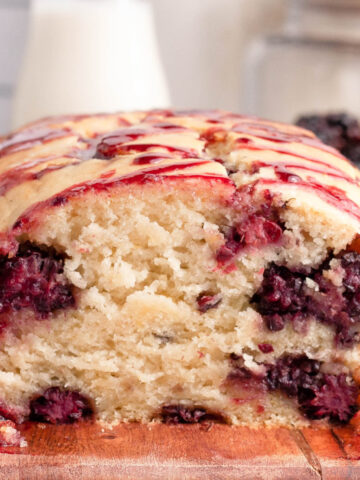
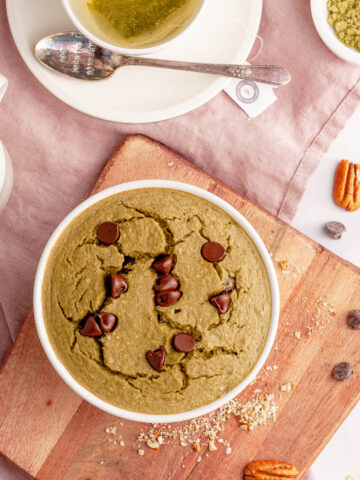
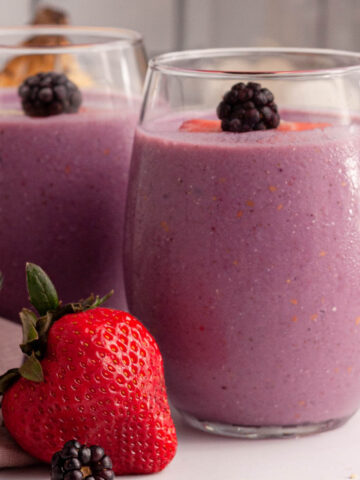
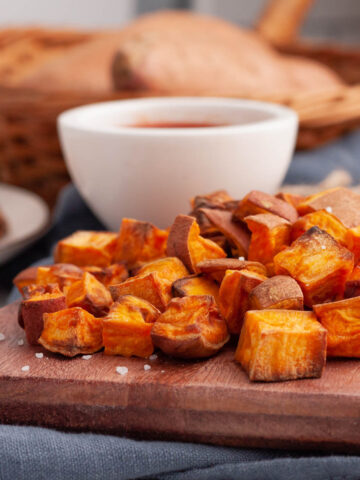
Natalie says
Best cornbread I ever had. I love the crispy crust, delicious!
Melanie Lorick says
Woohoo!! I'm so glad to hear this, Natalie! Thanks so much!
Savannah says
Yum! I'm going to have to make this cornbread ASAP! I love a good cornbread asap. All the other recipes I've tried of yours are delightful. 🙂
Melanie Lorick says
That makes my day, Savannah! Thank you! Let me know what you think when you give it a try! 😊
nancy says
everyone needs to make this asap! This cornvbread recipe is amazing and I love how it turned out in a skillet. totally makes a difference!
Melanie Lorick says
Isn't skillet cornbread the best?! I'm so glad you enjoyed it. Thank you for sharing, Nancy!
Jacqui says
It turns out to be so delicious and authentic! You can’t even tell it’s vegan - what a great recipe! Thanks so much for sharing.
Melanie Lorick says
Thank you for sharing, Jacqui!! I'm so glad!!
Michelle says
Beautiful recipe - so light and fluffy!
Melanie Lorick says
Thank you so much, Michelle!
Lucas says
Such an incredible recipe! The tips to avoid a crumbly really worked! I wish I knew that when I made a version of this recipe long ago. This is definitely a keeper!
Melanie Lorick says
So glad to hear it, Lucas! A crumbly cornbread is no fun, so I was on a mission to make this consistency "crumble free." 😉 Thank you for sharing!
Jan says
I love that is was delicate with a crispy bottom. The crispy bits are my favourite
Melanie Lorick says
Mine, too!! 😉😉 Thanks so much for sharing, Jan!